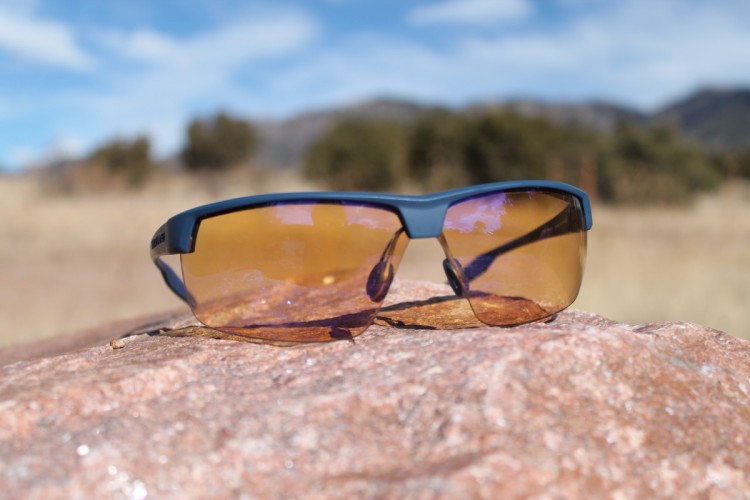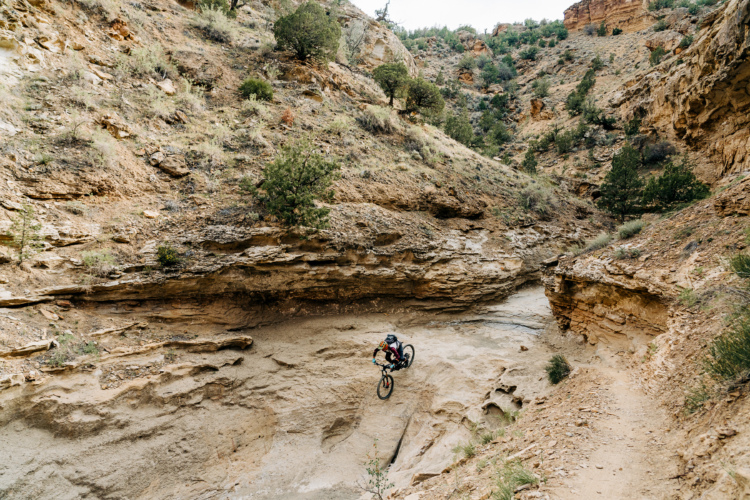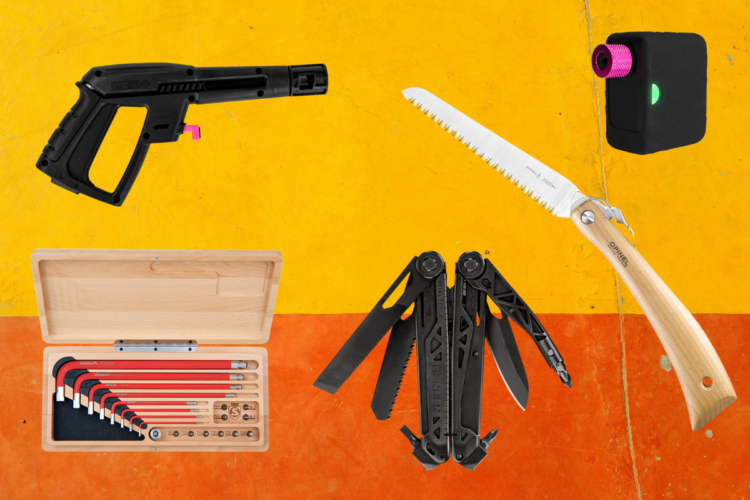
We don’t often think about them, but mountain bike gloves serve many important purposes. In the grand scheme of things, gloves don’t cost a lot of money, but the purchase decision is important because it can have a serious impact on comfort. Here are some important things to consider when shopping for bike gloves.
Grip
First and foremost, mountain bike gloves exist to improve the rider’s grip on the handlebars. Bare, sweaty hands make for dangerous handling, which is why most riders wear gloves, even in the summer.
Many gloves use a synthetic, leather-like material called Clarino on the palms and grip side of the fingers. Clarino, and other similar materials that are used on the underside of gloves, absorb sweat and produce decent grip, even when wet. On top of that, most manufacturers add rubberized graphics and patterns for additional grip. Some even utilize a silicone coating on fingertips for improved brake lever grip.

Abrasion Protection

Mountain bike gloves are designed to provide a level of abrasion protection, and not just in the event of a crash. Sure, it’s nice to have palm protection for a hands-first skid across the dirt, but gloves do just as well at protecting hands from high-speed brushes against trees and plants along the trail.

Some gloves are actually designed with armor built-in, generally on top of the knuckles. Leatt’s DBX 4.0 series of gloves feature a flexible material on the knuckles and third and fourth fingers that hardens upon impact, reducing the trauma associated with smacking a hand against a rock or tree.
Insulation / Ventilation
While grip and abrasion protection are the primary reasons mountain bikers wear gloves on the trail, insulation and warmth is perhaps the next most important reason for donning a pair of gloves. Bike gloves are offered with varying amounts of insulation, from winter to summer weight.

For winter mtb gloves, look for gloves that are well-insulated but also offer dexterity on the bike. Too thick, and it can be difficult to operate shifters and brakes. 45NRTH has a winter glove called the Sturmfist 45 that has just 3 fingers (and of course, one thumb), providing maximum warmth while leaving one or two (depending on your preference) braking fingers available.

On the flip side, summer gloves are designed to keep hands cool while still offering grip and protection. Fingerless gloves are an option, though many riders avoid these because they tend to bunch up between the fingers, causing discomfort and even blisters. Summer gloves typically utilize a lightweight, vented fabric on the top side, along with tiny, strategically-placed pinholes on the palm.
Padding
Mountain bike gloves are available with varying degrees of padding in the palm and fingers. Beginning mountain bikers may be attracted to the promise of gel-padded gloves because their hands feel beat up after a ride. In the end, most conclude that padded gloves actually make matters worse, causing blisters and discomfort in other parts of the hand.
If your hands hurt after a ride, you may want to first verify that your bike fit is correct. This means checking your handlebar height and width, and even looking at your saddle position. Technique goes a long way in minimizing hand discomfort, as does dialing in suspension settings. All of this takes time, and unfortunately resolving hand issues is rarely as simple as buying a thicker pair of gloves.
Glove Fit
Mountain bikers love to talk about the importance of finding the right saddle, and getting the right glove fit is similarly important. I’ve been guilty of wearing gloves that are too big, and the result is almost always blistered hands.
How do you know what size glove you wear? Standard glove sizing is based on the length (in inches) around the palm of your dominant hand, ranging from about 6.5″ to 12″. Most bike glove manufacturers simply size their gloves small, medium, large, etc., which corresponds to a standard size chart on their website.
But even if you know your glove size, and can match it to a manufacturer’s sizing system, it’s still a good idea to try on different sizes to see what works best. Personally, I like to go with a glove that feels a little tight, knowing that it will stretch a bit over time. Reducing blisters is all about finding a glove that fits like a second skin.
Enclosures

Some bike gloves feature velcro, drawstring, or snap enclosures at the wrist, while others simply utilize an elastic band. Well-fitted gloves should stay put with just an elastic enclosure, but some riders like the added security of velcro. A drawstring closure works well on insulated gloves where keeping cold air away from hands is paramount.
For summer riding, it seems most riders prefer gloves with elastic wrists since they’re generally more comfortable and weigh less.
Special Features
Like everything else in the bike world, bike gloves are chock full of features specifically designed to meet the needs of riders.
For starters, I like to look for gloves with a built-in snot rag. Many utilize a material like terrycloth on the top side of the thumb–perfect for wiping your nose at the start of a cool ride.
With the advent of smartphones, and perhaps corresponding with the decline in popularity of fingerless gloves, many gloves now feature smartphone-compatible finishes on fingers and thumbs. In my experience, few of these actually work as advertised, but it’s worth a shot. Pro tip: in a pinch, you can use your nose to tap on a smartphone without removing your gloves.




















0 Comments